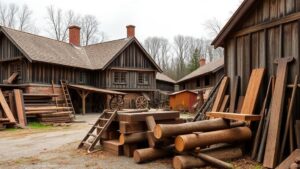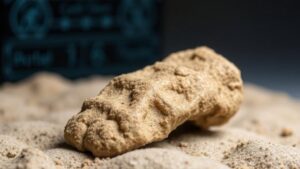Using Ancestry.com to Research Family Histories for Clues to Lost Relics
Using Ancestry.com to Research Family Histories for Clues to Lost Relics
The intersection of genealogy and archaeology presents a fascinating avenue for uncovering historical artifacts and relics that may have been lost to time. Ancestry.com, a powerful tool for genealogical research, serves as a portal for family history enthusiasts and academic researchers alike to trace lineage and potentially reveal hidden clues about ancestral connections to lost material culture. This article explores the methodology of using Ancestry.com effectively, illuminates case studies, and discusses the implications for historical research.
The Role of Ancestry.com in Genealogical Research
Ancestry.com, launched in 1996, is one of the largest online genealogical databases, boasting over 27 billion historical records and a community of millions of users. platform allows individuals to construct their family trees, access census data, digitized newspapers, and various archival records ranging from birth and marriage certificates to property deeds. A key feature is the ability to cross-reference family trees with historical documents, which can shed light on family connections and geographical migrations.
By systematically tracing genealogical lines, researchers can uncover familial ties to regions known for specific relics or artifacts. For example, an exploration of a family’s lineage might reveal ancestors who were blacksmiths in early 19th-century Pennsylvania, leading to inquiries about local lost objects produced by that trade.
Methodology for Finding Clues to Lost Relics
Using Ancestry.com to find clues about lost relics involves several structured steps:
- Constructing the Family Tree: Start by entering known relatives and using Ancestry.coms hints feature to build out the family tree. Accurate details about dates and locations are crucial.
- Exploring Historical Context: Research the historical context of the ancestors lives, including occupations, local events, and migrations, which may point to specific geographical areas rich in lost artifacts.
- Connecting with Local Histories: Link ancestors to historical societies, museums, or archives that focus on specific regions where the family lived. Community-oriented research can yield insights about local relics.
- Utilizing Online Communities: Engage with Ancestry.com forums or related social media groups to tap into collective knowledge and shared experiences among enthusiasts and experts.
Case Studies of Successful Discoveries
Several researchers have successfully utilized Ancestry.com as a catalyst for uncovering family histories linked to lost relics. One prominent example is the discovery of a Revolutionary War-era musket that belonged to an ancestor of Mary Smith, a genealogist in Virginia. Through Ancestry.com, she traced her lineage to a soldier who served in the local militia.
This connection led her to local historical archives where evidence of her ancestors military service was preserved. Not only did she locate the musket–having been reportedly lost during an encounter at the Battle of Great Bridge–but she also unearthed letters written by her ancestor that detailed the engagement in which the musket was lost.
Similarly, the case of the Sullivan family, who had roots in early New England, showcased how tracing lineage led to the recovery of a family heirloom quilt believed to have been made during the Civil War. Using Ancestry.com, the descendants connected with a local museum that cataloged artifacts from that era, ultimately identifying the quilt based on the familial signatures sewn into the fabric.
Conclusion: Implications for Historical Research
The utilization of Ancestry.com for researching family histories serves dual purposes: it enriches an individual’s understanding of their lineage while potentially unearthing historical artifacts tied to their ancestors. As demonstrated through various case studies, the platform aids in reconstructing narratives of the past, bridging personal heritage with broader historical contexts.
Researchers are encouraged to adopt a methodical approach when using Ancestry.com, ensuring thoroughness in family tree construction and historical documentation. As the study of genealogy continues to converge with archaeology, the potential for discoveries based on familial ties holds exciting prospects for both academic and personal exploration.
Actionable Takeaways
- Begin your genealogical research on Ancestry.com by inputting known relatives and leveraging available historical documents.
- Investigate local historical societies or archives connected to your ancestors’ geographical roots.
- Join online forums for collaborative research efforts and knowledge exchange on genealogy and archaeology.
By leveraging these practices, researchers and enthusiasts can enhance their genealogical pursuits, potentially leading to the discovery of lost relics that tell a story worth preserving.



